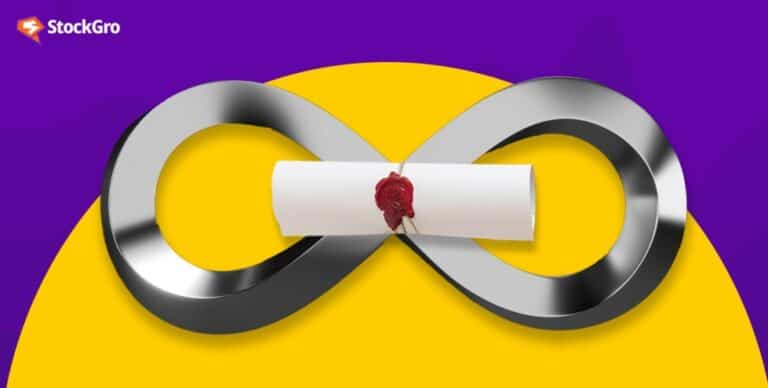
The National Stock Exchange (NSE) and Bombay Stock Exchange (BSE) have laid down stringent procedures and principles for stocks to be listed on them.
Since companies with minimum turnover and revenue fail to meet the eligibility criteria of stock exchanges, they do not qualify for listing on the NSE or BSE. So, how do these companies raise capital through the public?
The pink sheet market becomes relevant in such situations.
What are pink sheet stocks?
Pink sheet stocks are stocks directly listed on the OTC (Over-the-Counter) market without being listed on stock exchanges. There is no centralised platform that regulates the transactions in this market. Instead, brokers and dealers ensure the execution of these trades.
The term “Pink Sheet” is rarely in use today. During the early times of trading, the details of stocks on the OTC markets were written in stock sheets that were pink in colour. That is how the term “pink sheet stocks” was generated.
The dealers play a critical role in the OTC market. They act as brokers between buyers and sellers to execute transactions. They also act as market makers to maintain the demand and supply of stocks.
You may also like: What are cyclical and non-cyclical stocks?
Features of the pink market
While the eligibility criteria for listing in the pink market differs from one country to another, some basic features of pink stocks are below:
- Pink sheet stocks cannot have listings on the stock exchanges. Similarly, stocks on the exchange cannot be listed on the pink sheet market.
- They do not have standard rules like the stock exchange.
- The pink sheet stocks have lower liquidity than stocks on the exchange.
Pros and cons of trading the pink sheets
Both investors and the company listed have few benefits and risks for trading on the pink market / OTC market.
Pro of pink sheet stocks:
- Pink sheet stocks help small companies raise capital from the public, which would not have been possible otherwise because many small-sized companies do not meet the eligibility requirements of exchanges.
- The procedure of listing on the pink or OTC market is simpler than listing stocks on the exchange. The expenses and the documentation process are relatively lower.
- From the investor’s perspective, registering as investors or traders on the OTC or pink market involves fewer formalities than being traders on the exchange.
- The expenses related to transactions on the pink market are lower. It helps investors increase their profit margins.
- The regulations in this market are lower, due to which there are not many standard rules and procedures. The terms of the trade are usually customisable based on the trader’s requirements.
Cons:
- Despite being monitored by the Ministry of Finance, the possibility of fraudulent activities is higher in the OTC market as compared to stock exchanges.
- Lack of standardisation affects traders, too. Since there are no set rules, the opportunity to defraud the other party is high in the pink sheet market.
- The number of traders in the pink sheet market is limited. Hence, the stocks listed here are not as exposed as the stocks listed on the exchange.
- The liquidity of pink stocks is relatively low. This is because traders are apprehensive about trading in the pink market.
- The details of stocks on the OTC market are generally not published. Hence, there is a lack of transparency.
Pink sheet vs. penny stocks
Penny stocks are stocks with low prices and market capitalisation. Generally, stocks trading below ₹10 in India and $1 in Western countries fall under the penny stocks category.
They are similar to pink sheet stocks with respect to their low liquidity and high risk. However, the primary difference between the two is that penny stocks can be listed on the stock exchanges, unlike pink sheet stocks.
If a penny stock is directly listed in the OTC market, it classifies as a pink sheet stock, too.
Also Read: How to compare stocks? Explore the various tools available
Pink sheet market in India
The term “pink sheet stock” or “pink sheet market” is outdated in India. So, let us understand the scenario of trading in the OTC market in India.
It is essential to note that all pink sheet stocks are part of the OTC market, but not all securities in the OTC market are pink sheet stocks.
The OTC market is a platform for transactions, like the forward and future contracts which do not come under the pink sheet stocks.
The transactions in the OTC market are supervised by the Ministry of Finance.
Traders and investors cannot directly transact on the OTC market. They must create demat accounts and trade through brokers and dealers designated for OTC trades.
The pink stocks listed in the OTC market can also be bought and sold through brokers.
Pink market in the United States of America
The pink market, also called the open market in the United States, is one of the types of OTC markets with stocks that are not listed on big exchanges like the New York Stock Exchange (NYSE) or NASDAQ. It is considered one of the riskiest markets as small companies and companies with low financial stability list their stocks under the pink market.
Though these stocks are not under the thorough supervision of the Securities and Exchange Commission (SEC), there are few eligibility requirements to list themselves in the pink market.
Also Read: Understanding blue chip stocks – Meaning, features and their safety
Bottomline
The stocks that are not eligible as per the listing requirements of exchanges get listed in the pink sheet markets.
Trading in the pink sheet market is legal however, the risks associated with these stocks are high.
Stocks on the pink market are traded through brokers, and multiple broking firms provide this service.
It is essential for traders to analyse their goals in detail before entering the pink market to trade.

